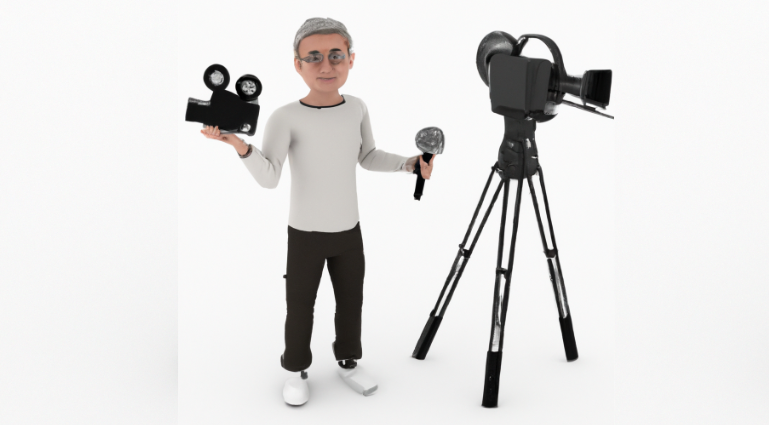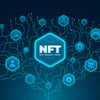The Art of 3D Modeling in Animated Films

Introduction:
The art of 3D modeling has revolutionized the world of animated filmmaking by bringing characters, environments, and special effects to life like never before. With the advancements in technology and software, 3D modeling has become an essential tool for filmmakers to realize their vision and create immersive experiences for the audience. In this blog, we will explore the impact of 3D modeling in animated filmmaking, from successful films that have utilized this technology to the advantages and challenges of using it in production.
Examples of successful animated films that have utilized 3D modeling services
One example of a successful animated film that utilized 3D modeling to bring the characters and environment to life is "Zootopia" (2016), produced by Walt Disney Animation Studios. The film takes place in a fictional city where anthropomorphic animals live together in harmony, but things take a turn when a rookie bunny cop and a sly fox team up to solve a missing mammal case.
To create the world of "Zootopia," the filmmakers utilized 3D modeling services to create detailed and lifelike character models of the animals, as well as the city and its various environments. This allowed for a more immersive and believable world for the characters to inhabit, which in turn enhanced the storytelling and emotional impact of the film.
The use of 3D modeling also allowed for more flexibility in the animation process, as the filmmakers could manipulate the models to achieve the desired movements and expressions for each character. Additionally, the use of 3D modeling helped streamline the production process, as the models could be reused in various scenes throughout the film.
Overall, the success of "Zootopia" is a testament to the power of 3D modeling services in bringing animated films to life. By utilizing these services, filmmakers can create rich and immersive worlds that captivate audiences and enhance the storytelling of their films.
Animated films have come a long way since the days of hand-drawn animation. The use of 3D modeling in filmmaking has enabled filmmakers to create extremely complex and realistic scenes, as well as facilitating collaboration between artists and designers. Here are some more examples of successful animated films that have utilized 3D modeling:
Toy Story 4:
This beloved Pixar franchise has been a pioneer in the use of 3D modeling in animated filmmaking. Toy Story 4 is a prime example of how 3D models can elevate the visual effects of an animated film. The film's environments and characters are incredibly detailed and realistic, making the audience feel like they are part of the story. Apparently the 3D models used in Toy Story 4 were high poly. They were created using the latest computer-generated imagery (CGI) technology and techniques. The characters in the film were designed to look more realistic than in previous Toy Story films, and this would typically require higher resolution models. The film was released in 2019, which was after the widespread adoption of high-poly models in CGI.
Frozen 2:
Another highly successful animated film that used 3D modeling to create stunning visuals is Frozen 2. The film's environments are breathtakingly beautiful, and the characters' movements are incredibly realistic. The use of 3D modeling allowed the filmmakers to create a world that was both fantastical and believable, immersing the audience in the story. The 3D models used in the movie (like Elsa, Anna, Olaf, Kristoff, and Sven) are highly detailed, with intricate textures and animations that bring their characters to life. One interesting observation is that the animators used a new simulation tool to create the realistic movements of Elsa's hair and dress, which required a lot of computing power and technical expertise.
Moana:
Moana is another example of how 3D modeling can be used to create stunning environments. The film's ocean scenes are some of the most visually impressive sequences in animated film history. The use of 3D modeling allowed the filmmakers to create an ocean that was not only beautiful but also had a personality and character all its own.
The most famous 3D characters from the movie Moana is the title character herself, Moana. She is a beautifully designed character with intricate details in her clothing and hair, and her expressions and movements are incredibly lifelike. The movie also features 3D environments of various islands Moana travels to, which are incredibly realistic and add to the immersive experience of the film. The attention to detail in both the character design and environment modeling is truly impressive.
The Incredibles 2:
The Incredibles 2 is a great example of how 3D modeling can be used to enhance the action sequences in an animated film. The film's fight scenes are incredibly dynamic and fast-paced, and the use of 3D modeling allowed the filmmakers to create complex environments that added to the excitement and intensity of the scenes.
These examples illustrate how 3D modeling can be used to elevate the quality of an animated film, making it more engaging, immersive, and memorable for the audience. By using 3D modeling services like those offered by My3dmodels, filmmakers can bring their vision to life and create truly stunning animated films.
How 3D modeling can benefit Documentary filmmakers
3D modeling services can be a game-changer for documentary filmmakers, as they offer a range of benefits that can help to enhance the storytelling process. Firstly, 3D models can help to visualize complex concepts and ideas, making them more accessible and engaging for viewers. For example, a documentary about ancient civilizations could use 3D models to bring to life long-lost cities, providing a unique perspective on how these civilizations lived and thrived.
Secondly, 3D modeling services can help to create stunning visual effects that can add to the impact of a documentary. For example, a documentary about the ocean could use 3D models to create realistic and detailed representations of marine life, giving viewers an immersive experience that they may not have been able to experience otherwise.
Finally, 3D models can help to create accurate and realistic reconstructions of historical events, allowing viewers to experience these events in a new and meaningful way. For example, a documentary about a major historical event could use 3D models to recreate the scene, allowing viewers to see what it might have looked like and how it may have played out.
Overall, 3D modeling offer documentary filmmakers a powerful tool that can help to enhance their storytelling and engage viewers in new and exciting ways.
How 3D modeling services can benefit filmmakers from other genres
3D models can benefit filmmakers across various other genres too, including drama, comedy, romance, and adventure. For instance, 3D modeling can help create breathtaking visual effects that enhance the drama and suspense of a film. In action and adventure films, 3D modeling can be used to create stunning landscapes, exotic creatures, and thrilling action sequences. In comedy, 3D models can add a touch of humor and whimsy, such as the quirky, larger-than-life characters in animated films like Shrek or The Incredibles. In romance, 3D modeling can create beautiful, romantic settings that add to the atmosphere and help set the mood. Overall, 3D models can provide filmmakers with the tools they need to bring their stories to life in new and exciting ways, and to transport their audiences to entirely new worlds.
How 3D modeling services can benefit independent filmmakers
Independent filmmakers often face significant challenges in bringing their creative vision to life due to limited resources and budget constraints. However, with the rise of 3D modeling, independent filmmakers now have access to advanced technologies and expertise that can help level the playing field with larger studios.
One of the main benefits of 3D modeling services for independent filmmakers is the ability to create high-quality and detailed 3D models of characters, environments, and assets. This can help to elevate the production value of the film, making it more appealing to audiences and potential investors.
For example, the independent film "Loving Vincent" utilized 3D modeling services to create a unique and visually stunning animation style. The film was hand-painted in the style of Vincent Van Gogh's paintings, and 3D models were used to create the animation frames, allowing for a more realistic and fluid movement of the characters and scenery. The film was a critical and commercial success, earning numerous awards and nominations, including an Academy Award nomination for Best Animated Feature.
Another example is the independent film "Kubo and the Two Strings," which utilized 3D modeling to create intricate and detailed puppets that were then animated using stop-motion techniques. The use of 3D modeling allowed for greater precision and detail in the puppet design, resulting in a visually stunning and immersive film. The film was also a critical and commercial success, earning two Academy Award nominations for Best Animated Feature and Best Visual Effects.
Working with experienced 3D modeling professionals can also be a significant benefit for independent filmmakers. These professionals can offer valuable insights and suggestions to enhance the final product, helping filmmakers to bring their creative vision to life in the most effective and efficient way possible. Additionally, 3D modeling services can help to reduce production costs and timelines, allowing independent filmmakers to focus their resources on other aspects of the production.
Overall, 3D modeling can be a game-changer for independent filmmakers, providing them with the tools and resources they need to create high-quality, visually stunning films that can compete with larger studios.
From Script to Screen - the process and how 3d models are conceptualised for films
Creating an animated film is a complex process that involves multiple stages, from initial concept development to final production. The use of 3D modeling services can help streamline this process and ensure that every aspect of the film is executed to the highest possible standard.
The first stage of the process is script development. This is where the story is developed, characters are created, and the overall vision of the film is established. Once the script is in place, the filmmakers will work with 3D modeling professionals to begin conceptualizing the characters and environments that will bring the story to life.
This involves a process of sketching and modeling, as the artists work to bring the characters and environments from the page to the screen. They will use advanced 3D modeling software to create detailed and realistic 3D models of each character and environment, which will serve as the foundation for the animation process.
Once the 3D models are in place, the filmmakers can begin the process of animation. This involves adding movement and expression to the characters, bringing them to life and giving them personality and depth. The use of 3D modeling services can help ensure that the animation is smooth and realistic, as the models are designed with movement and animation in mind.
Finally, the film is rendered and produced, with sound effects, music, and other post-production elements added to create a fully immersive experience for the audience. The use of 3D modeling services can help ensure that every aspect of the film is executed to the highest possible standard, from the initial concept development to the final production.
How 3D Modeling Can Elevate Your Filmmaking
When it comes to making animated films, the possibilities of 3D modeling are endless. From creating realistic characters and environments to achieving dynamic camera movements and special effects, 3D modeling can take your filmmaking to new heights.
With the help of 3D modeling services, filmmakers can achieve a level of creativity and detail that was previously impossible. By using advanced software tools and techniques, 3D modeling professionals can bring even the most complex ideas to life in a way that is both visually stunning and narratively compelling.
One of the key benefits of it is that it enables filmmakers to create more dynamic and immersive scenes. By using 3D models, filmmakers can easily manipulate camera angles, lighting, and textures to achieve a desired effect. This can help create a more engaging and realistic environment for viewers, drawing them into the story and making them feel more invested in the characters and their journey.
In addition, 3D modeling can help streamline the filmmaking process, reducing production costs and timelines. By using 3D models, filmmakers can easily make changes to their designs without having to reshoot entire scenes or rebuild physical sets. This can save time and money, allowing filmmakers to focus on other aspects of the production process, such as scriptwriting, sound design, and post-production.
3D modeling can elevate your filmmaking in countless ways, enabling you to achieve your vision in a way that is both visually stunning and narratively compelling. With the help of experienced 3D modeling professionals, you can unlock the full potential of this powerful tool and take your filmmaking to new heights.
Discovering the Impact of 3D Modeling in Animated Filmmaking
One of the most significant ways 3D modeling has revolutionized the world of animated filmmaking is the ability to create realistic and intricate characters, environments, and assets that were not possible before.
For example, the film Avatar (2009) was a game-changer for the use of 3D modeling in filmmaking. The film's director, James Cameron, used innovative motion capture technology and 3D modeling to create a visually stunning and immersive world that had never been seen before. The 3D models used in Avatar allowed the filmmakers to create intricate and detailed characters, environments, and assets that were seamlessly integrated into the film's storytelling.
Similarly, in the film The Lion King (2019), 3D modeling was used to create realistic and lifelike animals, environments, and landscapes that helped to transport viewers into the heart of Africa. The use of 3D models allowed the filmmakers to create scenes and shots that were previously impossible, such as sweeping aerial shots of the savannah and close-up shots of the animals' facial expressions.
In addition to creating visually stunning and immersive worlds, 3D modeling has also allowed filmmakers to work more efficiently and collaboratively. For example, the production team of the film Zootopia (2016) used 3D modeling to create a virtual version of the film's world, allowing them to move freely and explore the space in a more intuitive way. This helped to speed up the production process and allowed the team to work more closely together, resulting in a more cohesive and polished final product.
Use of 3D modeling in animated filmmaking has changed the way films are made, allowing filmmakers to create more intricate, detailed, and immersive worlds that were previously impossible. The examples mentioned above demonstrate the vast potential of 3D modeling to transform the art of storytelling and bring filmmakers' visions to life.
Maximizing Creativity in Filmmaking
When it comes to filmmaking, creativity is key. Filmmakers are always looking for ways to bring their unique visions to life, and 3D modeling services have revolutionized the way this is done. With 3D modeling, filmmakers have a powerful tool that allows them to bring their creativity to life in ways that were once impossible.
One example of how 3D modeling can maximize creativity in filmmaking is by allowing filmmakers to create complex and detailed environments that would be impossible to create otherwise. For example, in the film Avatar, director James Cameron used 3D modeling to create the alien world of Pandora. The intricate details and vivid colors of the environment would have been nearly impossible to achieve with traditional filmmaking techniques.
Another way 3D modeling can maximize creativity in filmmaking is by allowing filmmakers to create unique and engaging characters. For example, in the film How to Train Your Dragon, 3D modeling was used to create the dragon Toothless. The unique design of the dragon, with its expressive eyes and intricate details, helped make the character one of the most beloved animated characters of all time.
Finally, 3D modeling can also maximize creativity in filmmaking by allowing filmmakers to experiment with different camera angles and shots. For example, in the film The Incredibles, 3D modeling was used to create the final action sequence in which the characters battle the villain on a volcanic island. The use of 3D modeling allowed the filmmakers to create a dynamic and visually stunning sequence that would have been difficult to achieve with traditional filmmaking techniques.
Creating Immersive Environments with 3D Modeling in Animated Films:
The use of 3D modeling has revolutionized the creation of immersive and realistic environments in animated films. With 3D modeling, filmmakers can create intricate and detailed environments that enhance the storytelling and create a more engaging experience for the audience.
One example of creating immersive environments with 3D modeling in animated films can be seen in the movie "Avatar" (2009). The entire film was shot in a green screen studio with almost all of the environments, characters, and creatures being created through 3D modeling. The stunning landscapes of Pandora and its diverse flora and fauna were all modeled in 3D, giving the audience a fully immersive experience.
Another example can be found in the Pixar film "Finding Nemo" (2003). The underwater environment of the Great Barrier Reef was meticulously created with 3D modeling, allowing the filmmakers to showcase a vibrant and colorful underwater world. The use of 3D modeling allowed for the creation of realistic underwater lighting, as well as the intricate details of the coral reefs and the movements of the fish.
Collaboration with 3D Modeling Service Providers in Animated Film Production:
Collaborating with a 3D modeling service provider is crucial to ensure that the filmmaker's vision is realized. Working with experts in the field can provide filmmakers with access to the latest technology, resources, and talent, resulting in a more polished and professional end product.
Special Effects and Visual Storytelling in Animated Films with 3D Modeling:
3D modeling offers a range of benefits in creating special effects and visual storytelling in animated films. It allows filmmakers to create stunning visual effects that enhance the overall cinematic experience, resulting in a more immersive and engaging film.
The Evolution of 3D Modeling in the Animation Industry:
3D modeling has significantly impacted the animation industry and has continued to evolve over time. With advancements in technology, 3D modeling has become more accessible, allowing for greater innovation and creativity in animated film production.
Advantages of Using 3D Modeling in Creating Consistent Characters and Assets:
One of the significant advantages of using 3D modeling in animated film production is the ability to create consistent and easily editable characters and assets throughout the production process. This ensures continuity and reduces the risk of errors, saving time and resources.
Impact of 3D Modeling on Film Marketing and Audience Engagement:
The use of 3D modeling in animated films has also impacted film marketing, helping to attract and engage audiences. Stunning visuals and realistic environments created through 3D modeling can generate buzz and excitement, leading to increased ticket sales and higher audience engagement.
Challenges and Limitations of Using 3D Modeling in Animated Film Production:
While 3D modeling offers a range of benefits in animated film production, there are also challenges and limitations to consider. These may include issues related to cost, technical proficiency, and potential creative limitations.
The Future of 3D Modeling in Animated Film Production:
The future of 3D modeling in animated film production is exciting, with the potential for even greater innovation and creativity. As technology continues to evolve, filmmakers will have access to new tools and techniques, allowing for the creation of increasingly immersive and engaging animated films.
Conclusion:
In conclusion, 3D modeling has become an indispensable tool in animated filmmaking, enabling filmmakers to create immersive and engaging experiences for their audiences. From creating consistent characters and assets to collaborating with 3D modeling service providers, the use of 3D modeling has allowed filmmakers to realize their vision and maximize creativity in their projects. As technology continues to evolve, we can only expect 3D modeling to become even more innovative, offering limitless possibilities for animated filmmaking.




